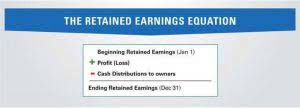
In the income statement, each line item is expressed as a percentage of the total revenue. This allows for the assessment of cost structures, profit margins, and the relative contribution of different revenue streams. For example, by comparing the percentages of cost of goods sold and operating expenses, analysts can determine the efficiency of a company’s operations.
- This means that Apple’s capital expenditures were 9.1% of its total net cash from operating activities for the year.
- For example, if you notice that a significant portion of your cash flow is coming from investing activities, it may indicate that you are investing too much in assets or acquisitions.
- Vertical analysis also makes it easier to compare your company’s performance with your competitors, and clearly shows if you’re spending too much, or underperforming.
- Horizontal analysis, also known as trend analysis, compares historical data on a financial statement over different accounting periods.
- By following these tips, you can enhance the accuracy and effectiveness of your vertical analysis and make informed financial assessments.
- Vertical analysis, on the other hand, involves analyzing financial statement items as a percentage of a base amount to understand the relative proportions of various components within a single period.
Income Statement Vertical Analysis (

These tools can forecast future cash flow percentages and identify complex patterns in cash flow composition. For Interior Design Bookkeeping example, machine learning algorithms might identify subtle relationships between external economic factors and changes in cash flow percentages. Financial statements using vertical analysis clearly show the percentages in a separate column. Vertical analysis can guide decision-making processes by providing insights into the financial implications of various options.

Understanding the Implications of Vertical Analysis on Cash Flow Management
- Vertical financial analysis goes hand in hand with horizontal financial analysis, and they have to be used together, but they serve different purposes.
- Vertical financial analysis is a valuable tool to break down financial statements and gain a better view of how your company performs.
- Learn fresh perspectives and expand your network by learning from thought leaders in the finance industry.
- A significant increase or decrease in a particular line item percentage may indicate strengths or weaknesses in a company’s financial position.
- Financial statements using vertical analysis clearly show the percentages in a separate column.
- This format allows the company to spot trends, compare with industry benchmarks, and make better financial decisions.
Compares figures from multiple years to identify trends, looking at changes over time in different elements of the financial statements. In this example, we have expressed each line item as a percentage of the revenue, which serves as the base figure. By doing so, we can analyze the proportions and relationships between different components of the income statement. Accurate and reliable financial statements are essential for conducting effective vertical analysis. If the financial statements contain What is bookkeeping errors or are not prepared in accordance with accounting principles, the results of vertical analysis may be misleading. Therefore, it is crucial to ensure the integrity of the financial statements before performing vertical analysis.

Vertical Analysis Insights
Vertical analysis is exceptionally useful while charting a regression analysis or a ratio trend analysis. It enables the accountant to see relative changes in company accounts over a given period of time. Analyzing this data will help you identify any significant deviations from industry norms and pinpoint areas where improvements can be made. It provides insights into whether your business is performing above or below average in important financial areas.
For this, the best tool to use is Wisesheets which allows you to get historical financials, key metrics, and growth metrics on your spreadsheet in one click. Use horizontal analysis to track trends over time and evaluate growth in revenues, expenses, and profits. This shows that the amount of cash at the end of 2024 is 141% of the amount it was at the end of 2020. By doing vertical analysis the same analysis for each item on the balance sheet and income statement, one can see how each item has changed in relation to the other items. Then divide each dollar amount from the prior period by your result to calculate each dollar amount as a percentage of the total cash inflows from that period.
- These examples demonstrate how vertical analysis allows for meaningful comparisons, identification of trends, and assessment of the relative proportions and relationships within financial statements.
- It automatically collects data and helps generate common-size financial statements.
- The investing activities section focuses on cash flows related to buying or selling long-term assets like property, equipment, or investments.
- On the income statement, ACME shows costs and revenues as a percentage of total revenue.
Better stock investments one article a time

My journey from a finance-loving teenager to a tech entrepreneur has been a thrilling ride, full of surprises and lessons. After completing my BBA degree in Finance at the Schulich Program in Toronto, Canada. I started my career in the industry at one of Canada’s largest REITs, where I honed my skills analyzing and facilitating over a billion dollars in commercial real estate deals. Looking to streamline your business financial modeling process with a prebuilt customizable template? Say goodbye to the hassle of building a financial model from scratch and get started right away with one of our premium templates.